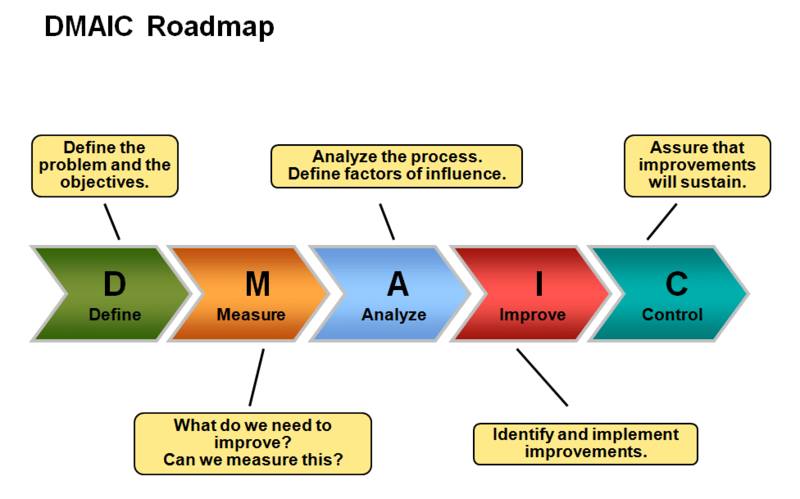
The international financial environment is more interconnected than ever, with the effects of unstable or inconsistent monetary policies being felt far beyond a single organization. In today’s globalized economy, policy and operational problems in one country’s financial organizations can have severe economic consequences across the world.
As these ripple effects become more and more noticeable, the ability to critically analyze and improve processes across an organization is an increasingly valuable career skill. While management techniques like Lean Six Sigma (LSS) have roots in manufacturing, there are numerous applications for LSS in finance and accounting that can help to correct operational inefficiencies and minimize risk across an organization.
Benefits of Six Sigma in Finance and Accounting

Applying the principles of Lean Six Sigma in finance and accounting can create competitive advantages for organizations in nearly every industry.
The case studies highlighted below offer a detailed look into how these methodologies and tools can be used to do more than streamline operations—they can also improve organization-wide culture.
Examples of Six Sigma in Finance and Accounting
Error Reduction
Lean Six Sigma allows for more focused and efficient operations in departments that are not entirely focused on manufacturing. One particular case study that focused on billing reconciliation found that billing errors resulted in customer accounts being charged less than the amount due approximately 60% of the time. After implementing LSS, however, the organization nearly eliminated this issue completely.
Problem Identification
One of the strengths of LSS is that it uses quantitative methods to identify key points of impact (KPI). Once efficiency issues within these KPIs have been identified, LSS can be used to discreetly and specifically tackle those problems.
One of the essential tools in LSS for identifying KPIs and any associated issues is the process map. By defining the boundaries and needs of the current process, professionals can identify issues with existing procedures and use these findings to improve them or remove processes that aren’t generating value.
This is a key element of LSS and is referred to as the “DMAIC” or Define, Measure, Analyze, Improve, Control methodology. Pairing DMAIC with these LSS strategies offers a powerful way to objectively analyze and improve operations within an organization.
When applying Lean Six Sigma in accounting, for example, the Accounts Payable department is a key area of opportunity. Imagine a company needs to process a higher volume of invoices. They can use LSS to define the guidelines for successfully processing a completed invoice, measure the current success rate based on those guidelines and analyze the data gathered to identify where and how waste is occuring. The results may show that while the invoices are completed in a timely manner, the wait time for managers to approve payments is too long. Once a bottleneck has been identified, the approval process can be improved to control the future success of the process.
For a similar application of Lean Six Sigma in finance, the processes associated with loans are key opportunities. For example, a bank that wants to streamline its credit processing operations can start by tracking every loan it processes for three months. The important factors to consider for this exercise are the time and effort required to fully process credit.
High variance in the amount of time it takes to complete these tasks is a sign that efficiency improvements can be made. From there, LSS can be used to build a process map that identifies all the steps, as well as the relationships between them. Common areas for improvement related to loan processing include reducing the amount of manually processed data and standardizing how loan applicant data is collected and stored.
Continuous Improvement
Lean Six Sigma is designed to be a continuous improvement system, so training in LSS continues to be useful well past its initial introduction. By implementing the DMADV (Define, Measure, Analyze, Design, Verify) process, organizations are able to apply it to the creation of new workflows and processes in addition to improving existing ones.

While the initial application of the methodology often focuses directly on specific product and process improvements, companies such as Capital One have found that applying lean six sigma in banking yields results that go far beyond their day-to-day work.
Studies that have looked at the long-term effects of applying Lean Six Sigma in large companies have found improvements across many areas of business. For example, throughout Capital One’s restructuring, one study identified the following LSS-driven benefits:
- Reduction in the rate of keying-in errors
- Increase in customer satisfaction
- Greater employee buy-in for LSS tools such as DMAIC
The Key to Successfully Using Lean Six Sigma in Finance
While Lean Six Sigma offers a powerful framework for improvement, effectively leveraging tools like process mapping often requires a culture shift in the organizations that adopt them. One of the key traits of successfully leveraging Lean Six Sigma in finance and accounting is the ability to step back and look at existing processes objectively to recognize that, even if a process has existed for decades, it may not be the most efficient way of doing things.
Another key element to success is recognizing how internal department processes may impact other stakeholders throughout and outside of an organization. For example, inefficiencies in processing invoices could make it more difficult for other departments to work with external vendors.
For processes with far-reaching ripple effects, like those in finance and accounting, it is helpful to have a Lean Six Sigma Green Belt certification professional to lead the project. This can ensure that key stakeholders are aligned toward a common goal and that teams can effectively manage the complexity of large-scale or company-wide process change.
Career Benefits of Learning Lean Six Sigma
As research has shown, the application of six sigma in finance provides benefits when managing existing processes as well as when pursuing innovation. The methodology has expanded far outside of the manufacturing sector and is now used across virtually every industry.
Developing expertise in six sigma for both finance and accounting environments can help aspiring or current managers take their careers to the next level. PayScale shows the average salary for a Continuous Improvement Manager with a Black Belt Lean Six Sigma Certification is more than $93,000, compared to a salary of less than $83,000 for that role overall.
About Purdue’s Online Lean Six Sigma (LSS) Certificate Program
Purdue University offers comprehensive online Lean Six Sigma (LSS) certificate programs designed for working professionals with varying levels of Lean Six Sigma experience. The online Lean Six Sigma certificate courses prepare professionals to satisfy the immense demand for Lean expertise, skills and certification.
Purdue offers the following courses 100% online:
- Lean Six Sigma Green Belt
- Lean Principles
- Lean Six Sigma Black Belt
- Lean Six Sigma Green Belt Refresher









